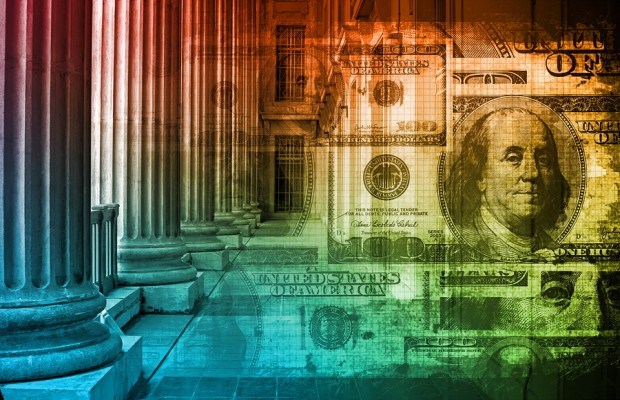The U.S. bond market may be teetering on the brink of a “liquidity cliff” and appears to be an asset “bubble” that could burst once interest rates start to rise again, a top U.S. securities regulator said on Wednesday.
“Everybody knows that this is a cliff that is coming,” said Securities and Exchange Commission Republican member Daniel Gallagher, in remarks to the Security Traders Association members.
“It is a clear and present danger that we must address.”
In recent years, Gallagher has been calling for reforms in the corporate and municipal bond markets, saying they are woefully opaque, lack adequate disclosures for retail investors, and need reforms to make them more liquid.
A year ago, Gallagher made headlines when he warned about a potential “Armageddon” in the $3.7 trillion municipal bond market once interest rates go up.
But his comments could draw more attention to the issue, especially after the bond market’s sell-off last week following Bill Gross’ decision to leave Pacific Investment Management Company, a unit of German insurer Allianz SE, and join Janus Capital Group.
Pimco’s Total Return exchange-traded fund had $448 million in outflows last Friday, a record amount for the fund. This raised questions about how vulnerable the market can be to shocks.
Gallagher said in an interview on the sidelines of Wednesday’s event that he was not overly concerned with the Pimco ETF outflows.
“I think it is a natural consequence when you have somebody so high profile like Bill Gross moving out of a firm. But I hope and expect it won’t become too much of a concern as the market soaks up the information about his departure,” he said.
He added that SEC staff is monitoring the situation, and said the outflows at Pimco could potentially help draw attention to his concerns more broadly about the bond market.
The Federal Reserve has kept its benchmark interest rate at near zero since December 2008. It also embarked on three bond buying programs to stimulate the economy after the financial crisis. The last of those programs ends this month and the Fed is mulling how to return to a more normal monetary policy.
Fed futures rates indicate the central bank will raise rates sometime around June or July of next year, a prediction in line with the Fed’s own forecasts.
Gallagher on Wednesday pointed to record issuances in recent years, and fears a possible liquidity crunch down the road.
“Where are bonds now? Who is holding them? Are they rational market participants?” he asked.
“We need to understand who these folks are and where is the liquidity going to be? Is Pimco going to trade with Fidelity? It is not going to work if it is all directionally moving in the same way.”
(Reporting by Sarah N. Lynch; additional reporting by Michael Flaherty; Editing by Sandra Maler and Richard Chang)





















 Executives on the Move at Liberty Mutual, Cowbell, W. R. Berkley
Executives on the Move at Liberty Mutual, Cowbell, W. R. Berkley  Slideshow: Carrier Management’s 2025 Top Editor’s Picks (Unlocked)
Slideshow: Carrier Management’s 2025 Top Editor’s Picks (Unlocked)  Northern California Flooding This Weekend Caused by Heavy Rain, High Tides
Northern California Flooding This Weekend Caused by Heavy Rain, High Tides  California Workers Comp Combined Ratio for 2024 Highest in 20-Plus Years
California Workers Comp Combined Ratio for 2024 Highest in 20-Plus Years 








